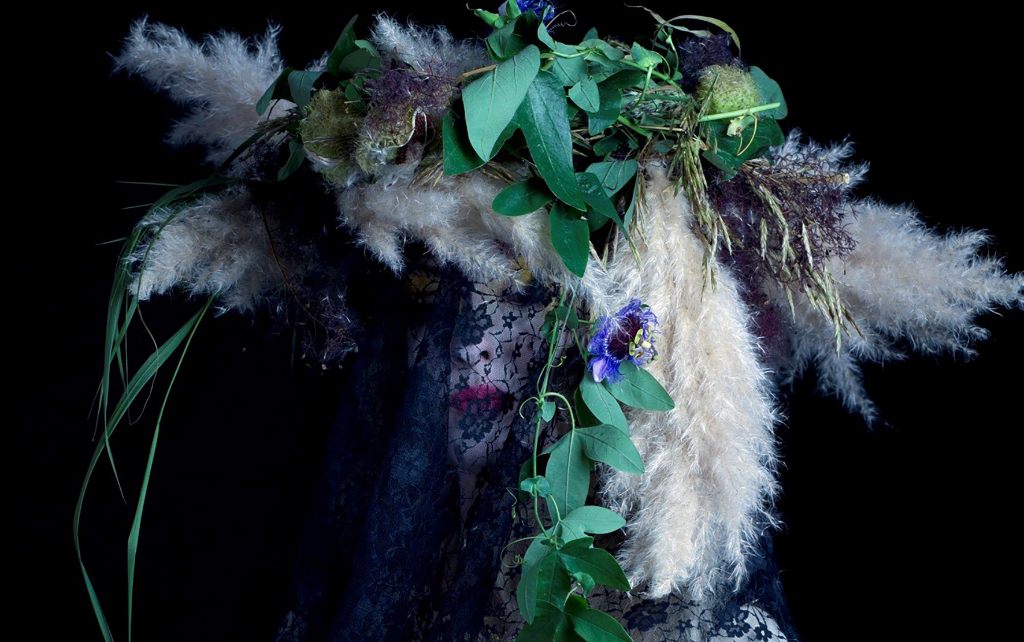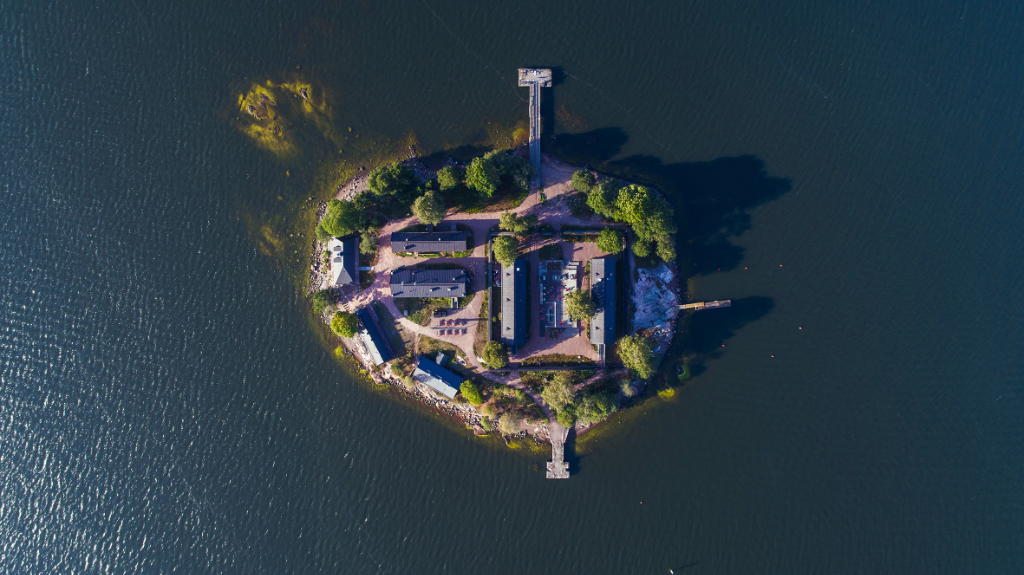Text by Agata Kik

It took one berry picker for Finland to introduce free roaming and foraging for its residents and visitors regardless of land ownership. Dating back to 1920, when Ilma Lindgren won a court case against a local landowner, and since when Finland introduced ‘everyman’s right’ (‘jokamiehenoikeudet’), the country has been a global example of a society where care, responsibility and respect for the environment and its inhabitants are planted from one’s early start. Additionally, this year the feminist association of Finland convinced the Finnish Forest Administration to adopt a gender-neutral name for the same right, introducing ‘everyone’s right’ (‘jokaisenoikeudet’) instead. Continuing to strengthen such activist Finnish feminist tradition, artist Nina Backman has departed on ‘A Million Trees to Finland’. The desired number of trees to be grown is not astonishing in a country where 600 000 people currently grow their private forests.
The Miniforest – Minimetsä, as the living artworks are called, invite one to slow down and even to stop and get hands dirty, to scent and listen to the silent life of trees. With such a breathing art installation series, combining tree planting, plant knowledge, environmental advocacy, and art, Nina Backman brings biodiversity and nature’s beauty back into the city and its inhabitants. For example, one of the Miniforest series has been grown in the art-oriented town of Mänttä-Vilppula in Finland.
This very peculiar place and a significant point on the Finnish art map originates in the thriving paper industry, and thanks to a passionate factory owner and art collector, the town is now known for The Serlachius Museums. Apart from a progressive art museum exhibition, the deserted town, which has become an international hub for art lovers, welcomes its visitors into a dedicatedly designed Art Sauna, which complements art viewing with well-being. Following Finland’s Golden Age to contemporary art practices, the place is a wild melting pot of art taken outside the gallery’s white walls or grey compartments of a big city.
Nina Backman’s environmental initiative is part of the ongoing Silence Project. It has already had its roots put down outside of its home country, for example, in Poland, with more interest currently seeded in Italy, Norway and Brazil. The project propels preservation, opening up green spaces for sharing silence and physical presence. The artist admits: I feel very strongly that each of us has a responsibility to address the global climate crisis in whatever effective ways we can. The generous gesture of inviting one into non-hierarchical ecosystems to immerse into interspecies entanglements is firmly rooted in Nordic culture. It is a remarkable element in Backman’s art practice, including an education program, exhibitions, and the performative Silence Meal, apart from tree planting.

A decade ago, the first dining experience in the Silence Meal series was already held in Helsinki. So far, the staged silence of improvised food sharing travelled to Germany, Italy, Poland, Iceland, Norway and Sweden. 2018, for example, the Silence Meal was presented in Brussels at one of Belgium’s leading cultural venues, Flagey, where the immersive, participatory performance was presented at midnight on a real concert stage.
Those years ago, John Cage would perform his 4’33 silent piece, so some of his audience members also ended up at Backman’s dinner. While in turn, at the table, they would not only silently sit together but share food and face each other. Still, can one ever claim that it is entirely silent at any point we share? In fact, according to Cage, there is no such thing as silence, and lack of speech or staged sounds demands from us a different listening act and tunning into everything that usually develops unheard or unnoticed. Following that, one can immediately sense there is much more to silence than the sonic experience. Silence brings attention to one’s embodiment, so the viscerality of physical presence and the affective resonance of the space in between compose the eventfulness within the stillness of each silent moment.
Returning to the Finish capital with an invited group of international journalists, creative practitioners and cultural policymakers, Nina Backman staged the improvised performative meal once more for real. She welcomed everyone in the majestic interiors of Sofia Helsinki. The long white-clothed table was carefully set, and field flowers would decorate the plates. At the same time, the host in a green velvet evening dress introduced the project, and its participating guests, ensuring every participant felt safe and comfortable to dive into the silent dining joyfully. The artist’s presence helped the invited audience unwind and open up to the unknown with curiosity and ease. When the language layer was suddenly torn down, and no more words were spoken, the participants exchanged shy smiles and enquiring gazes.
The ephemeral embarrassment of the social self stripped down to its pure physical presence, saturated the air. The tension dropped as everyone sat down and straightened their neck and spine. Without the speech, which is usually used as a mask concealing each individuality behind it, it was the chair that marked everyone’s territory, acting as the last barrier left between oneself and the other stranger’s body. Silence, thus, creates an intimate setting and is also the way towards one’s own natural way of being. The breath suspended suddenly as orchestrated waiters reappeared, and the delicious dishes were brought in. As soon as no words are spoken, the invisible labour overrode the presence of the served audience.
Everything usually undermined comes to the fore and is finally recognised for its crucial role. Every step of the waitressing staff, translucent liquid filling in the glass, a knife and a fork repeatedly hitting the plate, the sweet scent of a cauliflower steaming – immediately everyone bows their head, they inhale and salivate, while unconsciously contributing to this improvised play and having collectively turned the meal into a sensual symphony of the barely-seen.


The complete reversal of usual social dynamics is a political act in itself. Powerfully, thus, the Silence Meal transports each participant’s mind into a new space of heightened sensitivity, where a relationship instead of a linear direction becomes a multidimensional field. Expanding consciousness and cultivating care, Backman’s participatory, performative practice once more highlights the essence of Nordic culture, where the close relationship with nature celebrates silence and spaciousness.
Driven by the feeling of urgency to stay connected to the surrounding, listening deeply to the wounds in the social issues that demand healing, in her utterly activist artistic practice, Nina Backman has been in a long-term conversation with the science experts, who investigate climate change, air quality, biogeochemical cycles and environmental processes.
The Silence Project also sources its ecological understanding in one of the world’s top-ranked institutions for atmospheric sciences, the Institute for Atmospheric and Earth Systems (INAR) at the University of Helsinki. One of Backman’s long-term collaborators, for example, Professor and Chair of Finland’s Sustainable Development Expert Panel Eeva Furman, also working on the UN’s Global Sustainable Development Report, admits that The future is going to be very different from today. The job of humanity is to ensure that future builds through sustainable paths, and to have the courage to do this, imagination and ability for risk-taking are needed. Here comes the role of science and culture. Science tells us the space within which we should operate and the risks, while culture opens our brains to imagine all the still unknown ways to live and operate in this space and create a different, safer, just and sustainable planet.
Undoubtedly, Finland* is a leading international example in ecological research. At the same time, Nina Backman’s practice presents us with the fact that figuring out the best ways for the ecosystems to thrive in symbiotic synchronicity and grow into sustainability can only happen through liminality and the thresholds of interdisciplinarity when joint efforts of arts and sciences maximise the potential for sharing, exchange and learning.





